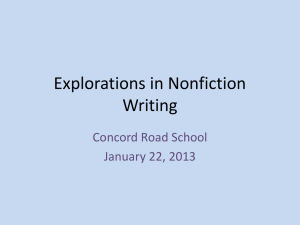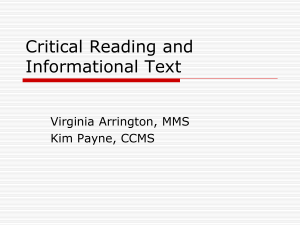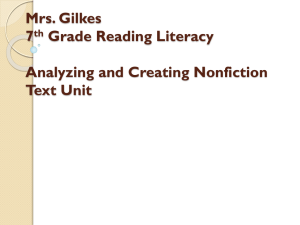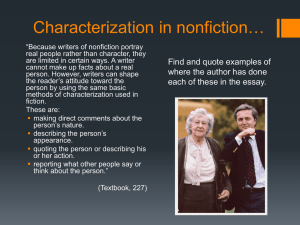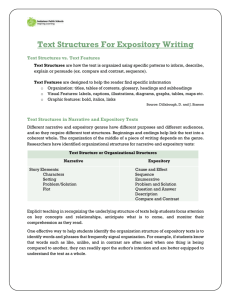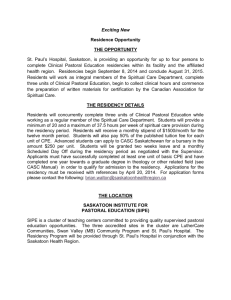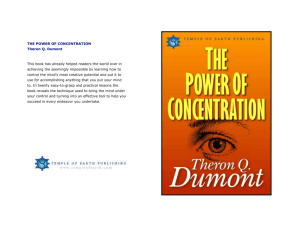Students: Dates: First Nations Guided Reading Lesson Book Title
advertisement
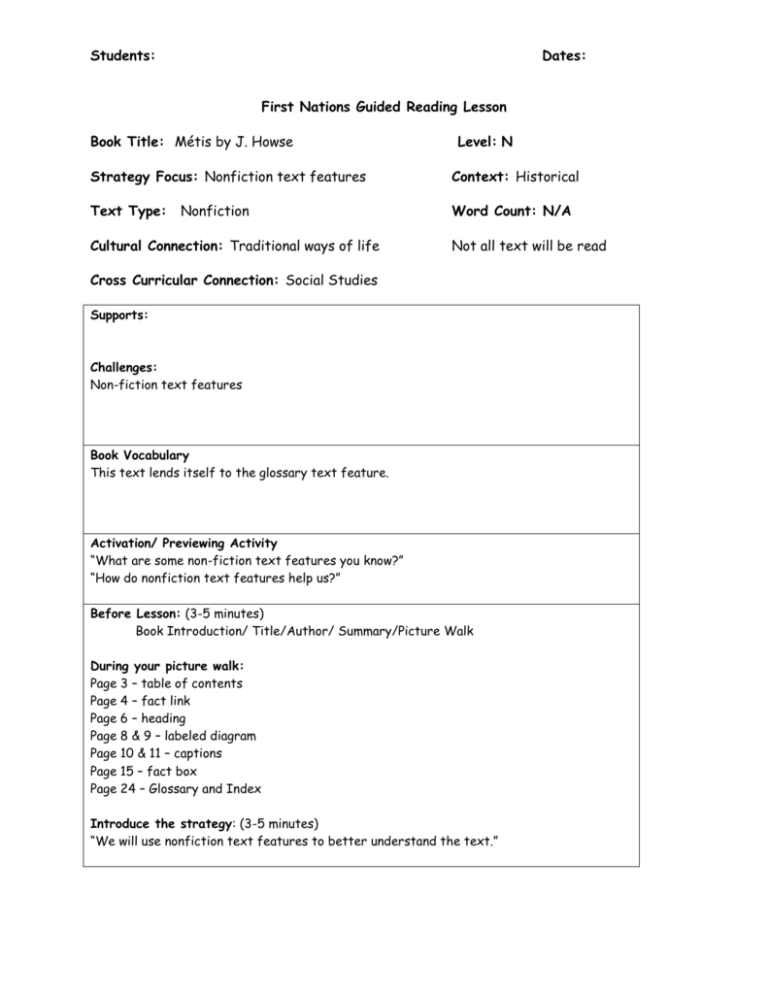
Students: Dates: First Nations Guided Reading Lesson Book Title: Métis by J. Howse Level: N Strategy Focus: Nonfiction text features Context: Historical Text Type: Word Count: N/A Nonfiction Cultural Connection: Traditional ways of life Not all text will be read Cross Curricular Connection: Social Studies Supports: Challenges: Non-fiction text features Book Vocabulary This text lends itself to the glossary text feature. Activation/ Previewing Activity “What are some non-fiction text features you know?” “How do nonfiction text features help us?” Before Lesson: (3-5 minutes) Book Introduction/ Title/Author/ Summary/Picture Walk During your picture walk: Page 3 – table of contents Page 4 – fact link Page 6 – heading Page 8 & 9 – labeled diagram Page 10 & 11 – captions Page 15 – fact box Page 24 – Glossary and Index Introduce the strategy: (3-5 minutes) “We will use nonfiction text features to better understand the text.” Students: Dates: During the Lesson: Teacher prompt: Page 4 – The People “What other nonfiction text feature helps you to understand the bolded words?” Note: The teacher needs to ensure the Glossary text feature is linked to the bolded words text feature. Page 8 & 9 - Métis Clothing “How do these text features (a labeled diagram) help you understand the topic?” Page 15 – Moving from Place to Place “How do the three text features on the page help you understand the text: the words, the picture, and the fact box?” Note: Nonfiction text features are often not used in isolation. Teacher role: Teacher listens to children read and records observations. Teacher is working with children one at a time (prompting, listening, assessing). Student role: All students are reading simultaneously. When students have completed their first reading, they should continue to read. After the Lesson: After reading, the teacher revisits the purpose for reading and the strategy focus with the students. Teacher encourages self reflection. Teacher Prompt: Prompts: “What nonfiction text feature best helped you read the nonfiction text?” Students: Dates: Follow Up Activities: Teachers can decide upon and provide applicable information to further address the focus. Assessment and Reflection: Teacher assesses comprehension. Teacher reflects on the lesson and determines key points to guide further instructional practice. Métis Literature Links Bouvier, R.E. (2008). Better That Way. Gabriel Dumont Institute of Native Studies and Applied Research: Saskatoon. Burton, W. & Fleury, N. (2009). Dancing In My Bones: La daans daan mii zoo. Gabriel Dumont Institute of Native Studies and Applied Research: Saskatoon. Dorion, L & Fleury, N. (2009). The Giving Tree: A Retelling of a Traditional Metis Story. Gabriel Dumont Institute of Native Studies and Applied Research: Saskatoon. Fauchon, J., Fleury, N. & Mauvieux, S. (2009). The Metis Alphabet Book. Gabriel Dumont Institute of Native Studies and Applied Research: Saskatoon. Howse, J., (2011). Métis. Weigl Educational Publishing: Calgary, Alberta. Murray, B. & Flamand, R. (2004). Li Saennchur Fleshii di Michif= Thomas and the Metis sash. Pemmican Publications: Winnipeg, Manitoba. Patton, A., Burton, W. & Fleury, N. (2007). Fiddle Dancer= Li Daanseru di Vyaeloon. Gabriel Dumont Institute of Native Studies and Applied Research: Saskatoon. Pelletier, J. & Panas, J. (2007). The Story of the Rabbit Dance. Gabriel Dumont Institute of Native Studies and Applied Research: Saskatoon.


